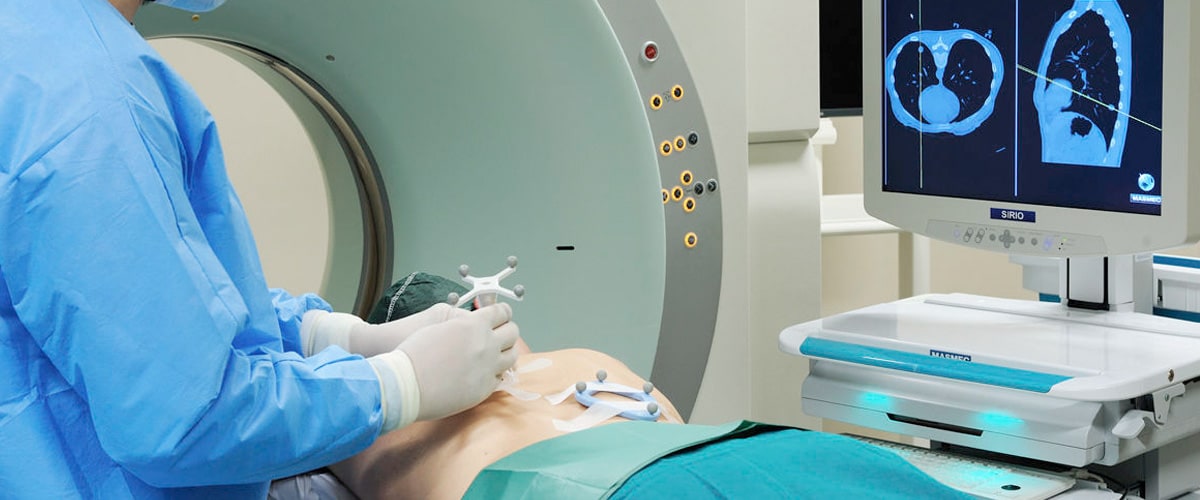A group of minimally invasive practices for diagnostic or therapeutic purposes. These are carried out by a specialised doctor who, according to each case, is guided by another radiology technique (ultrasound, mammograph, scanner or MRI) in order to access a lesion through the skin for it to be studied and treated. We carry out various interventional procedures at our Centre:
1 . ULTRASOUND GUIDANCE
Lesions can be accessed in real time and with no radiation, to allow samples to be taken by means of puncture or biopsy. In certain disorders it also allows for treatment of the same to be carried out, avoiding unnecessary surgery.
This is well tolerated and accepted by the patient, resulting in few complications when carried out by trained personnel.
- DIAGNOSIS:to make a diagnosis puncturing is sometimes necessary”
- Articular or arthrocentesis puncture: extraction of articular liquid for examination.
- Puncture or biopsy of visible lesions by means of ultrasound: breast, thyroid, prostate, nodes, muscle, joints, etc., in general in any accessible structure of the body.
- TREATMENT: “the radiologist can also treat”
- Draining of nodes and cysts
- Bursitis
- ‘Curled’ finger
- Morton’s neuroma
- Plantar fasciitis
- Plantar fibromatosis
- Pyramidal syndrome
- Articular bursal hydro-dissection (to detach intra-articular adhesions or scars)
- Injection of intro-articular hyaluronic acid
- Percutaneous extraction of foreign bodies
- Collection drainage (haematoma, abscesses, etc.)
- Treatment of tendinopathy:
- Therapeutic infiltration of substances to reduce inflammation or stimulate re-generation and healing of wounds of the tendon (corticosteroids, platelet growth factors, etc.)
- Percutaneous tenotomy
- rolotherapy (injection of sclerosant substances in tendinopathy)
- Lavage/aspiration of calcifications (calcifying tendinitis of shoulder or in other parts)
2.GUIDING by SCANNER
Biopsy of bone lesions and lesions not accessible by ultrasound. Periradicular or facet therapeutic infiltrations in spinal column, pyramidal syndrome, etc.
3. GUIDANCE BY RESONANCE
Breast lesions solely visible by means of MRI.


